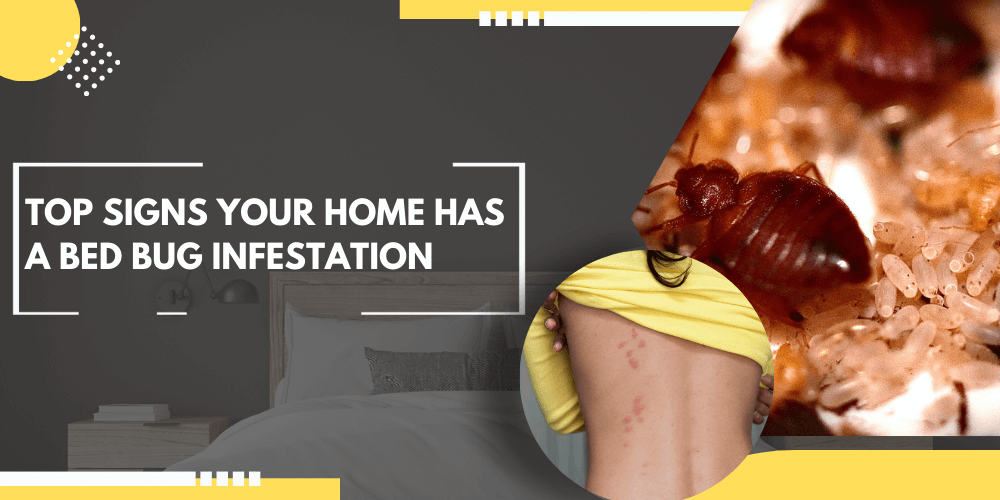Bed bugs are stealthy night-time critters that can turn your peaceful abode into a nightmare. Recognizing the signs of bed bugs can save you a lot of trouble and discomfort. Let’s dive into the indicators of a bed bug infestation and how you can effectively manage this unwelcome visitor.
Physical Signs of Bed Bugs
Detecting bed bugs begins with recognizing their physical signs. The following common physical signs to look out for:
- Bites on your skin: Bites are often the first sign of a bed bug infestation.
- Blood stains on your sheets: Tiny blood smears on your bedding can indicate that bed bugs have been feeding.
- Dark spots on mattress or furniture: Look for small, dark spots (bed bug excrement) on your mattress, box spring, and nearby furniture.
- Exoskeletons of bed bugs: Bed bugs lose their skins several times.
- Musty odor: Their scent glands may release a subtle, sweet, musty odor from a large infestation.
Visual Inspection Tips
A thorough visual inspection of your home for bed bugs is crucial to identifying an infestation early. These are the primary locations for bed bugs:
- Check common hiding spots: Examine all seams and crevices of your mattress, bed frame, and box spring. Also, inspect chairs, couches, and other soft furnishings.
- Use a flashlight: Bed bugs can hide in the tiniest of places. A flashlight can help spot these little pests in dark, hard-to-reach areas.
- Inspect secondhand furniture: Before bringing them home, always inspect secondhand beds, couches, or fabric chairs for signs of bed bugs.
- Look beyond the bed: Extend your search to nightstands, books, carpet edges, and electrical outlets.
- Use Bed Bug Traps: Placing bed bug interceptors under the legs of your furniture can help you identify bed bugs early and monitor infestation levels.
Unusual Bed Bug Habits to Watch For
Bed bugs exhibit several distinct behaviors that can indicate their presence in your home. Recognizing these habits is crucial for early detection and effective control. These are the behaviors to watch for:
- Nocturnal activity: Bed bugs are primarily active at night. They often bite sleeping individuals, resulting in a series of itchy, red bites that appear in a line or cluster.
- Hiding during the day: Look for bed bugs in the seams and fissures of mattresses, box springs, and wall and furniture gaps throughout the day.
- Blood stains on bedding: Small rust-colored blood spots on sheets or mattresses may indicate crushed bed bugs after feeding.
- Musty odor: An established infestation might produce a noticeable musty scent from the bed bugs’ glands.
- Egg casings and shed skins: In secluded areas, you can often find tiny, pale yellow skins that nymphs shed as they grow and white, oval eggs.
- Fecal spots: Dark, ink-like stains on mattress seams or walls are fecal spots left by bed bugs and signal an active infestation.
Early Detection Techniques
Detecting bed bugs is crucial in preventing a full-blown infestation. By being proactive and using the right tools and techniques, you can catch these pests before they spread. Here are some practical methods for early detection:
- Bed bug detectors and monitors: These devices can catch bed bugs by mimicking the conditions of human habitation (like heat and carbon dioxide output).
- Canine detection: Dogs trained to sniff out bed bugs can be remarkably accurate. Consider this option if you suspect an infestation but can’t find physical evidence.
- Regular bedding change: Regularly changing your bedding and looking for indications of bed bugs can help detect an infestation early.
- Professional inspections: A pest control professional’s trained eye is sometimes necessary, especially in complex living environments.
What to Do If You Find Bed Bugs
Although finding bed bugs in your house can be upsetting, you must take quick action to stop the infestation from getting worse. These are the recommended actions to take if you find bed bugs:
- Isolate the affected area: Avoid the spread by isolating the affected bedding or furniture.
- Vacuum thoroughly: Vacuum all possible hiding places for bed bugs.
- Wash bedding and clothing: Launder all affected fabrics at high temperatures (at least 120°F) to kill bed bugs and their eggs.
- Consult professionals: If the infestation persists, it may be time to call pest control professionals. They can provide targeted treatments such as heat treatments or chemical methods.
- Prevent future infestations: Following treatment, look for bed insect activity and take preventative steps, such as keeping your home clean and utilizing mattress encasements, to avoid bed bugs.
By staying vigilant and responding quickly to signs of bed bugs, “detecting bed bugs” can be integral to maintaining your home as a peaceful sanctuary.
Before You Go: Recap of Bed Bug Red Flags
If left ignored, bed bugs are a significant annoyance that can become a major issue. By being vigilant and knowing the signs of a bed bug infestation, you can take early action to prevent these pests from taking over your home. Remember, early detection is vital to stopping bed bugs in their tracks. Recognizing the signs early on is your best defense against a full-blown bed bug infestation.

Recent Comments